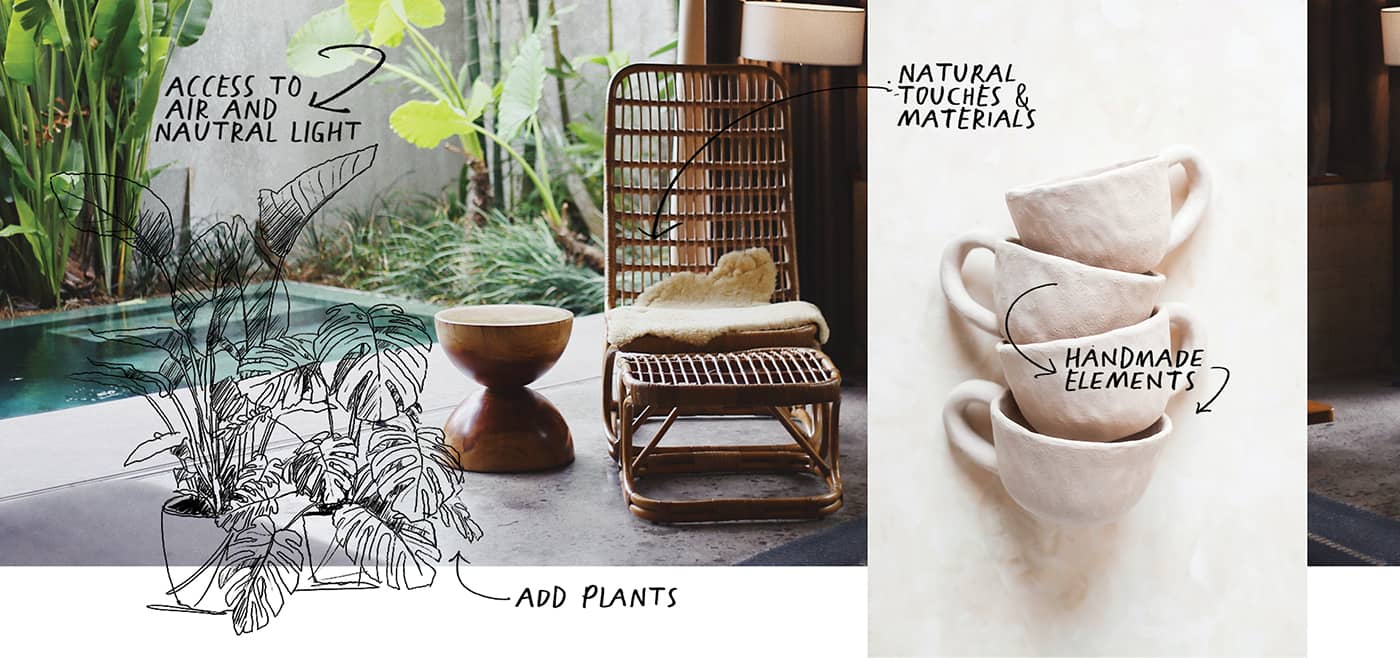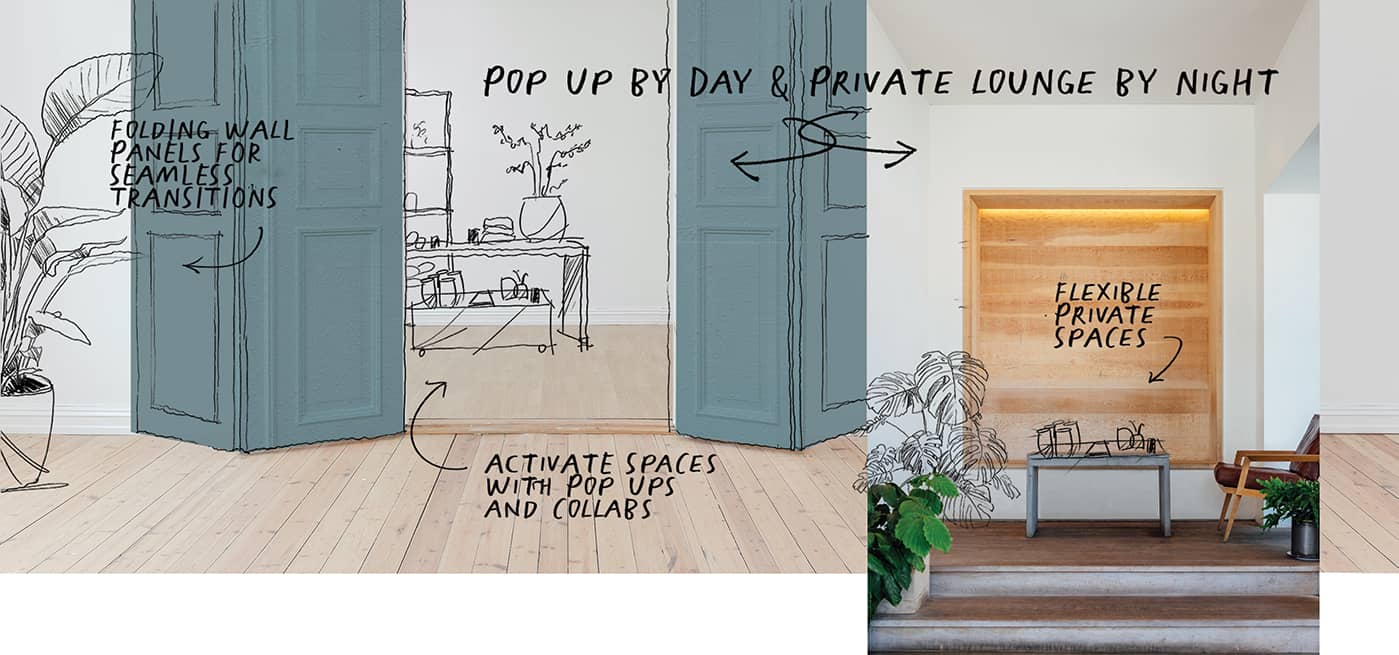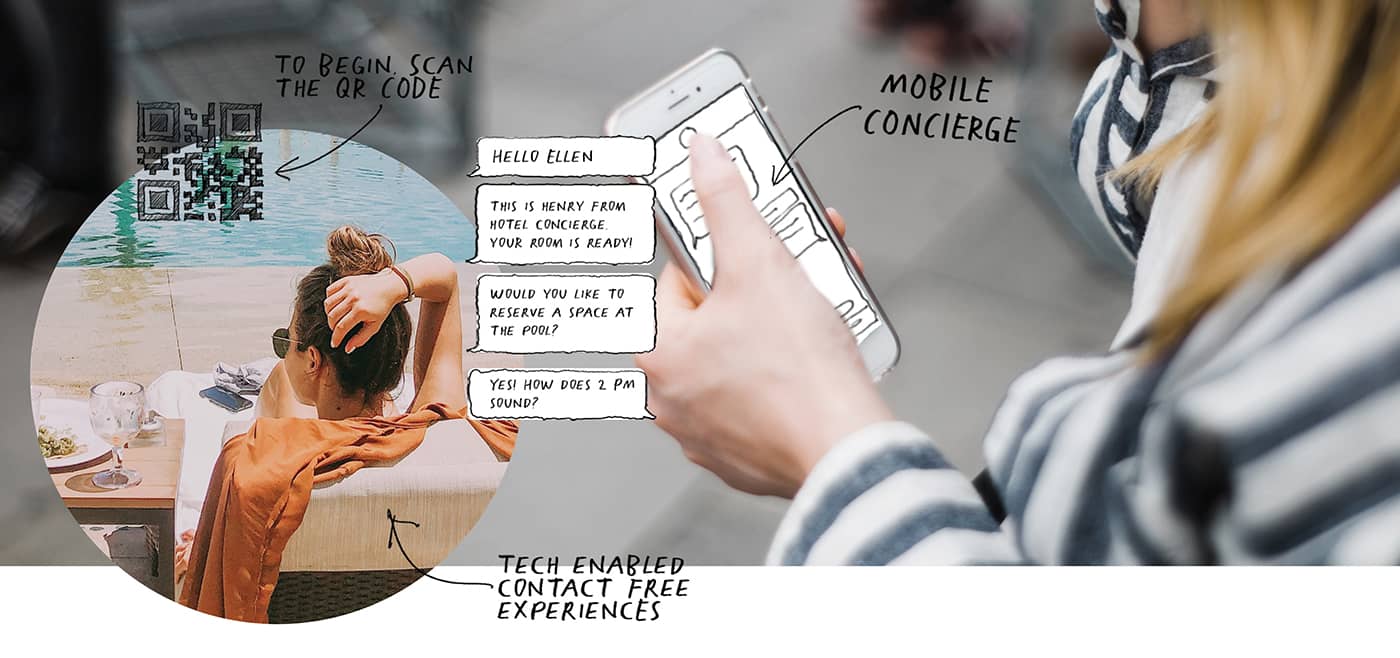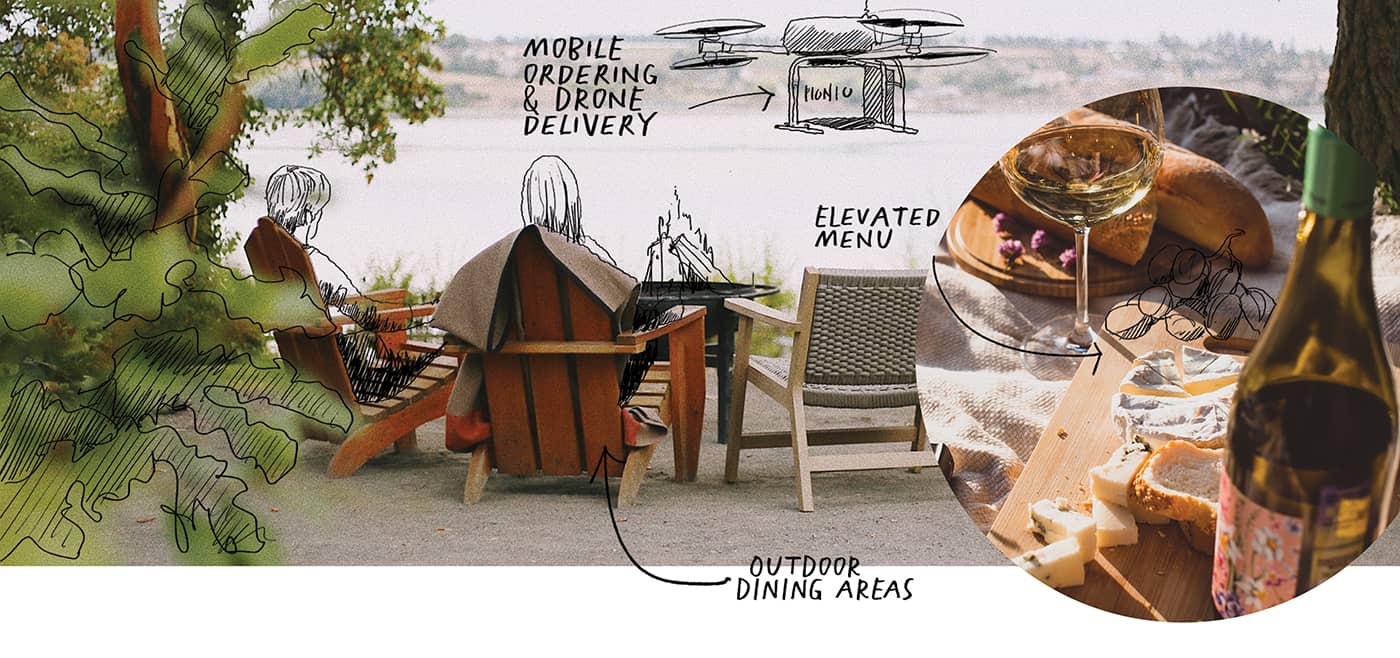Perspectives
Healing Through Hospitality
August 2020 / By Healing Through Hospitality, Marit Jensen, Elizabeth Bruno, Healing Through Hospitality

This article was first run with 360 Magazine in August 2020.
There has been a lot of speculation in every industry about how today’s reality will affect tomorrow’s possibilities. In June, The New Yorker released an in-depth exploration of what the future of architecture could look like, with the roots of modernist design having grown from the sterile lines and quiet colors of Tuberculosis-era sanatoriums in days past. It paints a future full of pandemic-inspired changes, but the truth is, the evolution is already deep underway, even if we don’t realize or acknowledge it.
When it comes to the idea of traveling—of spending an extended period of time, for business or pleasure, in a hosted space outside our own homes—our psyches have subconsciously rewritten what is most important in order for us to not only feel comfortable with but actually enjoy our experience.

For the hospitality industry, the emotional, physical, and psychological toll of a global pandemic will likely underpin travel trends that were already on the rise: biophilic designs rooted in nature, experiences rich in culture, and environments that promote both physical and mental health and wellness. But for brands looking at what’s next, there are numerous pieces of the puzzle that must come together to make guests truly feel comfortable with traveling once more.
Flexibility is the key to resilience.
Adopting the mentality of “one day at a time”, the ability to change and adapt spaces to fit present-day climates will be critical. With venturing outside of our own regions likely to remain difficult for the foreseeable future, travelers will instead seek out unique local destinations. They’ll gravitate toward dramatic hospitality spaces that can flex or change quickly in scale; the ability to easily flow from a multi-purpose, spacious area to a personal, private sanctuary will be paramount.

Flexibility of this caliber will give way to opportunities for new, hybrid spaces, allowing hotels and resorts to consolidate, reimagine, and deeply personalize their offerings. Simultaneously, guests will have the opportunity to discover new experiences at various intervals during the day: Bars offering breakfast service for takeaway in the mornings gives way to an open-concept lounge or coworking space in the afternoon. By rotating “dual purpose” spaces, hosts naturally reduce footprints and create a natural time to clean and sanitize spaces.
Leveraging technology to elevate safety.
Technology integration into hospitality experiences is a fickle thing: With how swiftly electronics evolve, expensive hardware upgrades can often be out of date within months of being implemented. Entering a room filled with aging technology can be a visually stark reminder of just how many people have touched those devices. Instead of letting technology hinder our relaxing experience, how can we use it to subtly support guests in feeling comfortable and safe?
The all-inclusive ticket to enabling this experience could be the one device many can’t live without. Subsequently, it’s one that we’re familiar with, comfortable with, and most importantly, feel safe using: our smartphones.The integration of subtle push notifications—for example, confirmation of your room’s scheduled daily cleaning, when housekeeping is actively there, and when they’ve vacated the space—have the opportunity to set and continuously keep a guest’s mind at ease.

Concurrently, granting visitors a familiar “no-contact” medium through which requests can be made—empowering a more comfortable experience—opens up a world of possibilities. Guests could use their phones to order room service, request additional towels, reserve a socially distant seat by the pool, at the bar, or in a coworking pod. The list goes on and on. And, the more guests utilize these digital services, the more in-depth their digital profile becomes, making loyalty programs more enticing through a safe yet personalized touch.
There is a double-edged sword here, though: designers cannot rely too heavily on technology as a substitute for, or complete replacement of, social interaction. Humans crave physical connection with one another, and hospitality experiences will still need to provide the option for us to embark on that journey if we so choose.
Imperfection is perfection.
It’s no surprise that, as we’ve found ourselves trapped indoors the past few months, our bodies are inherently drawn to the idea of becoming reacquainted with nature; not just for the fresh air and sunshine, but for the fundamental healing properties that simply being closer to nature provides us. By employing the concept of biophilic design, we focus on natural over synthetic as an overarching theme, tapping into the psychosocial wellbeing that humanity is currently craving the world over. Natural color palettes that seamlessly transition outdoor experiences inside create a continued sense of calm while indoors. The addition of plants throughout both cleans the air and provokes a sense of relaxation. Removing clutter to reveal clean lines, white space, and invoke a “less is luxury” mindset. Interior design is witnessing a return to these authentic, raw, and “imperfect” materials—ones where the hand of the maker is visible, they aid us in feeling more grounded, and reinforce a sense of place.

The question that hosts must ask themselves as they look toward the future, “How can I design my experience offering to reduce anxiety and make guests feel more naturally at ease?” Using Maslow’s hierarchy of needs as a guide, we have the opportunity to comfort guests holistically. The key to a reassured, tranquil mindset isn’t to simply coat everything in copper; designers will need to thoughtfully expand and go deeper to offer a sense of security and comfort beyond what’s on the surface.
A multifaceted food & beverage upgrade.
One of the things we miss the most, undisputedly, is the ability to dine out and spend time with friends and family. We don’t just crave the energy and social activity, we long for the semblance of normalcy tied to the experience itself.
While the industry has taken a hit to their traditional dine-in offerings, consumers are demanding more than ever before from the F&B industry: meal and cocktail kits, picnic baskets for outdoor excursions, easy curbside pickup, reliable room service, rapid and safe home delivery.
There is ample opportunity to adapt existing room service and F&B experiences, which are anticipated to see not only a resurgence but a higher demand for gourmet-level quality. And, with a renewed focus on safety and convenience, offering grab-and-go contactless options in restaurants or lobbies that can digitally be charged to one’s room opens up new avenues for revenue and differentiation.
With an added focus on finding space outside of personal rooms that guests still feel safe in, how can restaurants take advantage of a rise in take-out by enabling positive, memorable moments? Establishing outdoor spaces that guests can retreat to for picnics or morning coffee in solitude; remodeling rooms to better allow for comfortable dining during a night in; hosts have the opportunity to allow guests to write their own stories defined by their comfort levels, and designers have the chance to enable that journey.

The road ahead.
As brands and venues that offer hospitality experiences look toward the future, it won’t be about creating a compromised version of what we’ve known to be normal in the past, but cleverly designing and strategically implementing layers to more easily adapt for the unknowns that lie before us.
Over the past century, the desire for machine-made perfection was palpable. Today, as we strive to become closer with nature in a primal effort to heal our bodies and minds, hosts that embrace the perfect imperfection of raw edges, materials, and palettes—as well as provide variable spaces both indoors and outside—can help guests maintain a fundamental sense of safety and comfort as they embark on their journeys.
People will not feel comfortable traveling unless they feel safe. Those who create hyper-personalized, dynamic, memorable spaces that guests can not only escape to, but ones where they can wholeheartedly focus on physical and mental rejuvenation, will come out on top. After all, isn’t that what vacation is for?